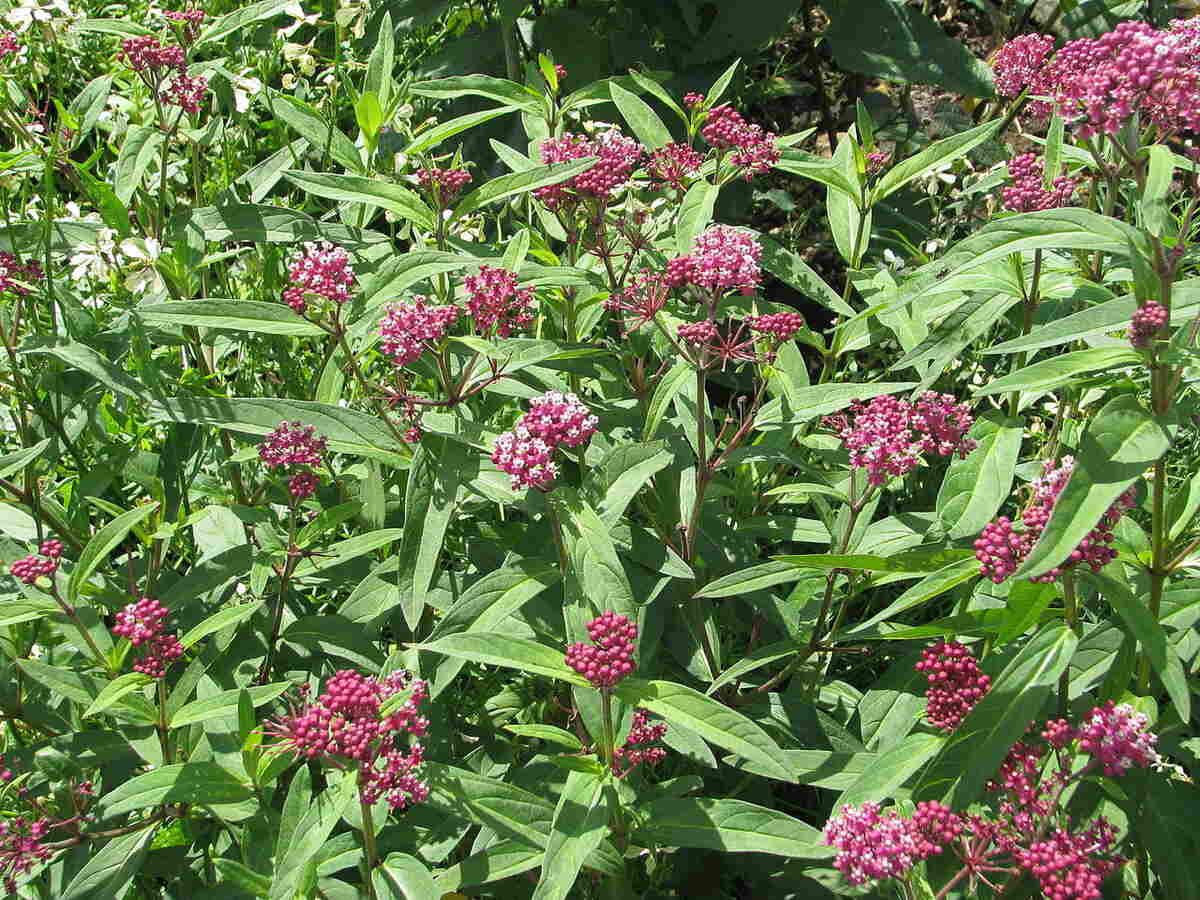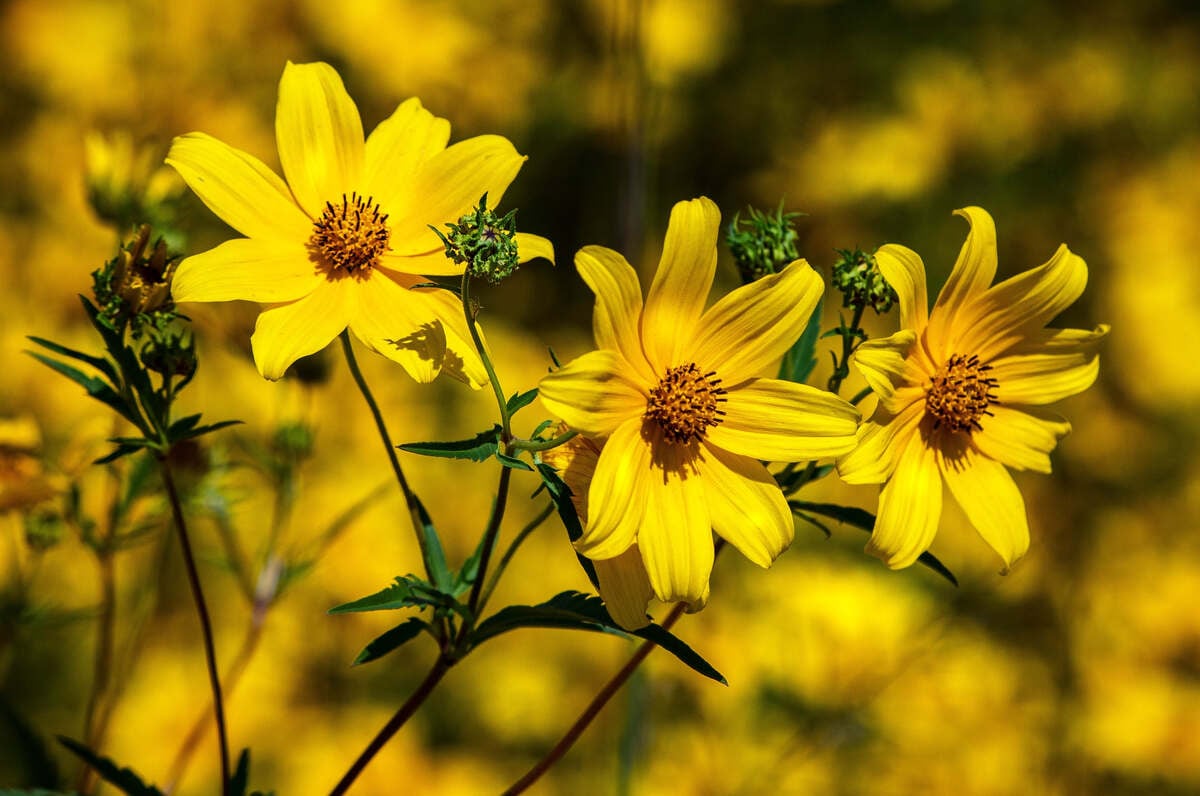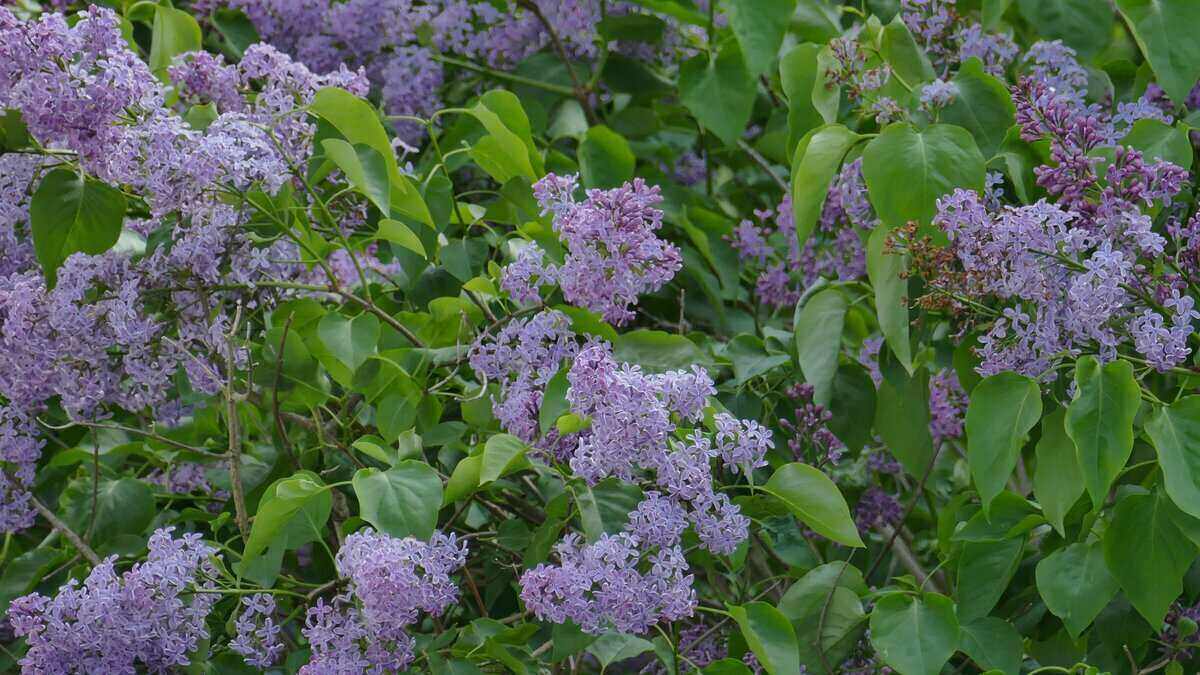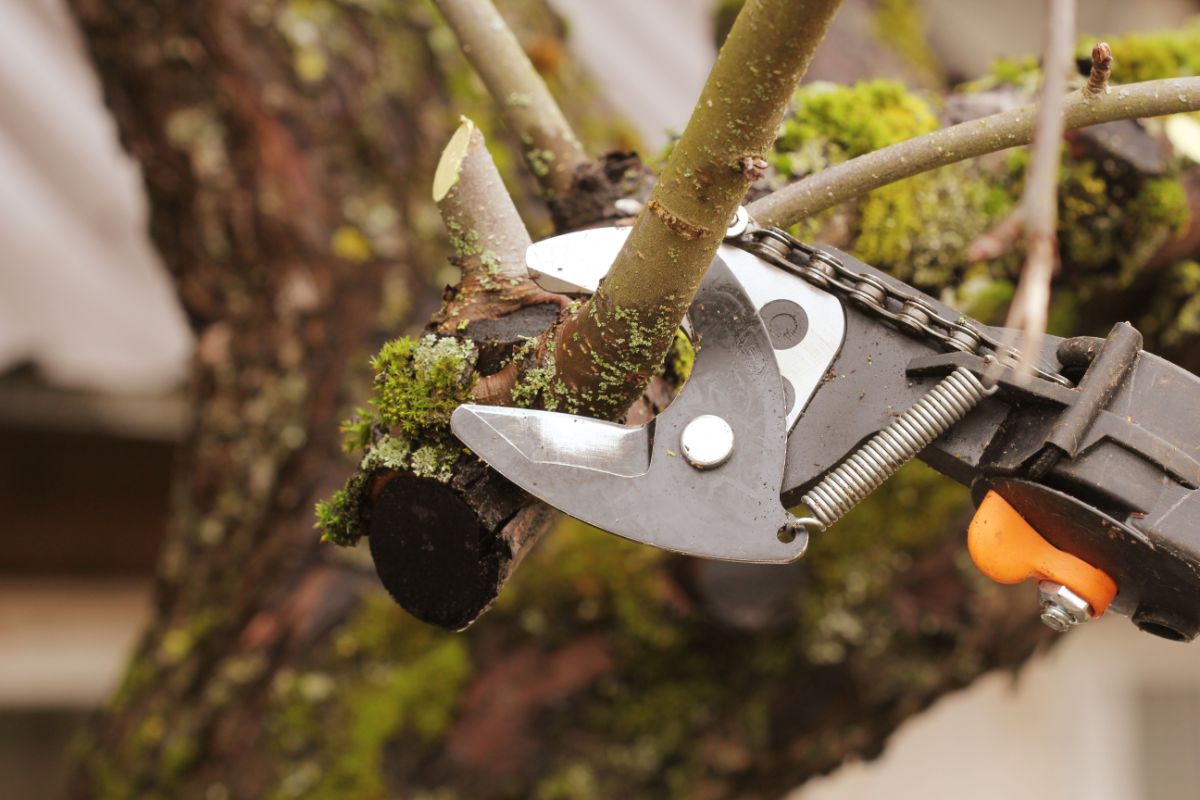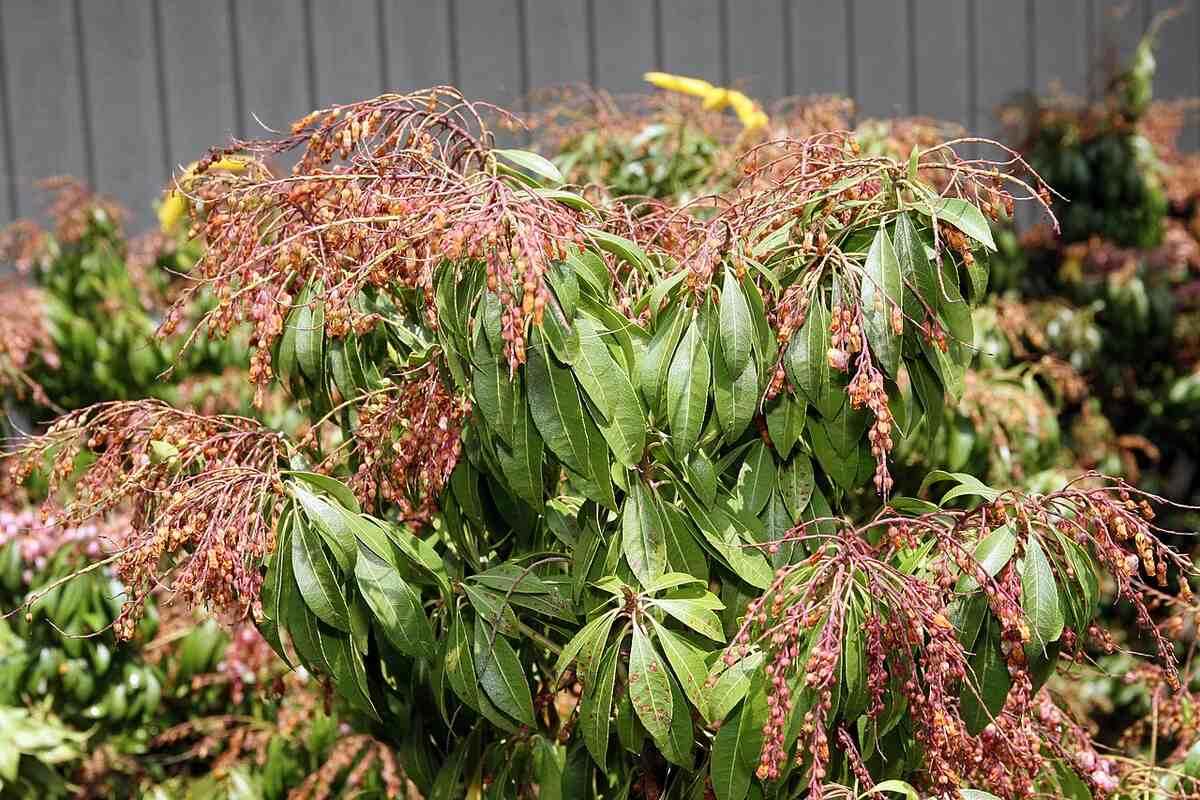
Flowering shrubs bring year-round beauty to your landscape. But to look and perform their best, flowering shrubs need regular pruning. But pruning flowering shrubs is very different from pruning trees and evergreens. Success depends on knowing when to prune flowering shrubs and how to do it properly.
When to Prune Flowering Shrubs
The “when” of pruning will depend on the type of flowering shrub that graces your landscape. Plants in this group will fall into one of three categories:
- Early-blooming shrubs that flower in spring. These include long-standing favorites such as lilac, forsythia, rhododendron, mock orange, and old-fashioned mophead hydrangea. Prune spring-flowering shrubs soon after their flowers die off.
- Late-blooming shrubs that flower in summer. These include spiraeas, potentillas, and smooth hydrangea. Prune them in late winter or early spring.
- Remontant or “everblooming” shrubs that bloom in spring and summer. These include shrub roses and certain varieties of hydrangea, such as Endless Summer. Prune right after the spring flowering.
| How, When to Prune Typical Types of Flowering Shrubs | |||
|---|---|---|---|
| Flowering Shrub Type | Examples | When to Prune | How to Prune |
| Spring-blooming shrubs (bloom on old wood) | Lilacs, forsythias, azaleas, weigelas, traditional bigleaf hydrangeas | Prune immediately after they finish flowering in spring. | Remove one-third to one-fifth of the oldest stems every two to three years. Prune those oldest stems back to 2 inches above ground level. |
| Summer-blooming shrubs (bloom on new wood) | Smooth and panicle hydrangeas, diervilla (bush honeysuckle), potentillas | Prune during late-winter dormancy, right before spring bud break. | |
| Everblooming shrubs (bloom on old and new wood) | Remontant or reblooming shrubs, such as Endless Summer hydrangeas | If you prune, prune right after spring flowering (the biggest flush of flowers) finishes. | Limit pruning to a minimum for maximum flowering. Thin and shape only as needed. |
How Often Should I Prune Flowering Shrubs?
Generally, shrubs need maintenance pruning every two to three years, according to Professor John Ball, South Dakota State University Extension Forestry Specialist. More specifically: It depends on the shrub. Pruning flowering shrubs is critical to encourage flower growth. But is this an annual job or an occasional one?
For smaller, multi-caned blooming shrubs up to 6 feet high, Ball recommends removing one-third of the canes every two to three years. For larger blooming shrubs — up to 15 feet tall, for example — remove just one-fifth of the canes. This will keep enough young wood on the plant to encourage blooms from base to top.
A Few Exceptions
- Hydrangeas don’t need extensive pruning unless you have to reshape the plant. Generally, all you need to do is deadhead the old flowers and remove dead wood when necessary.
- Dogwoods generally don’t need much pruning, either. But for those with vibrant stem color, such as red- or yellow-twig dogwoods, yearly pruning of the oldest stems will intensify the color that occurs on new growth. Prune out the oldest dogwood branches in late winter or early spring.
- Dead or damaged stems on all shrubs can be removed at any time of the year. But if you suspect disease, Ball recommends waiting until the plant — and the disease — are in their dormant season. There’ll be less chance you’ll unwittingly spread the disease.
How to Prune Flowering Shrubs
If flowering shrubs haven’t been maintained regularly, they may need extensive pruning to get back into flowering form, regardless of their flowering category. This approach to overgrown shrubs uses two basic methods: renewal pruning and rejuvenation pruning.
Renewal Pruning
Renewal pruning is usually a three-year project that consists of gradually removing all of a shrub’s stems. Each year, you’ll remove a third of the shrub’s largest, oldest stems. This gradual process restores your shrub’s beauty and flower-producing potential. By project’s end, all the stems have been renewed.
Rejuvenation Pruning
For shrubs that are seriously overgrown or display poor flowering, a more dramatic method is in order. This is the time for rejuvenation pruning, in which the entire plant is cut back at once.
For some dense, low-growing, flowering shrubs, such as spireas and potentillas, Ball recommends this approach every three years. They will come back and bloom profusely during the summer. Larger shrubs, such as lilacs, also can be rejuvenated in this way. But it will take several years for the shrub to recover and bloom again.
Pruning Tree-Like Shrubs
Ball warns that renewal and rejuvenation pruning only apply to blooming shrubs that have numerous canes. Don’t try it with tree-like shrubs with few stems, or evergreen shrubs such as yews or arborvitae. Instead, treat those plants as trees and follow the guidelines for tree pruning, in which you remove individual side branches rather than full stems.
https://www.youtube.com/watch?v=zps9jpeN6qA
Replacing Flowering Shrubs
Usually, with proper care, you can enjoy your flowering shrubs for many years. However, in some situations, removing the shrub is the best option. Some reasons to remove shrubs include:
- Disease: While some diseases are easily treated, others, like virus diseases, boxwood blight, and verticillium wilt, can be fatal.
- Insect infestations: If not caught in time, infestations of scale insects (also known as mealybugs) and spider mites can kill a shrub.
- Damage: Environmental factors, such as drought, extreme cold, and storm damage can kill plants. Overwatering can cause root rot, and if your shrubs are close to a city street, road salt buildup can be fatal.
To remove a bush or shrub, dig out from the base of the plant, including the roots, and be prepared to remove an extensive root system on large, old shrubs. Be sure to correct any environmental issues if possible; if not, put the new shrub in a better spot. Then be sure to stay on top of regular shrub care.
Proper Pruning Techniques
Pruning shrubs is not like taking a hedge trimmer to the bushes in the front yard. Dealing with a densely branched plant can be intimidating, but if you take your time and use the proper tools and cuts, you’ll get the job done. There are several pruning cuts you’ll need to be aware of.
Thinning. This entails cutting entire branches to the point of origin at the main branch or lateral branch. Thinning allows more light and air into the center of the shrub, which helps the plant resist disease.
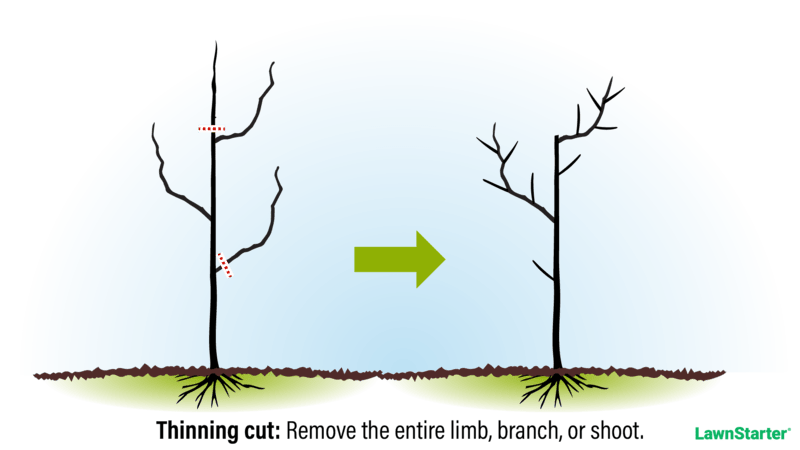
Heading. This cut removes part of a branch back to the bud. This stimulates growth in the lower buds. Most horticulture experts advise making the heading cut at a 45-degree angle. A larger angle will take longer for the shrub to repair and will lead to a greater risk of disease.
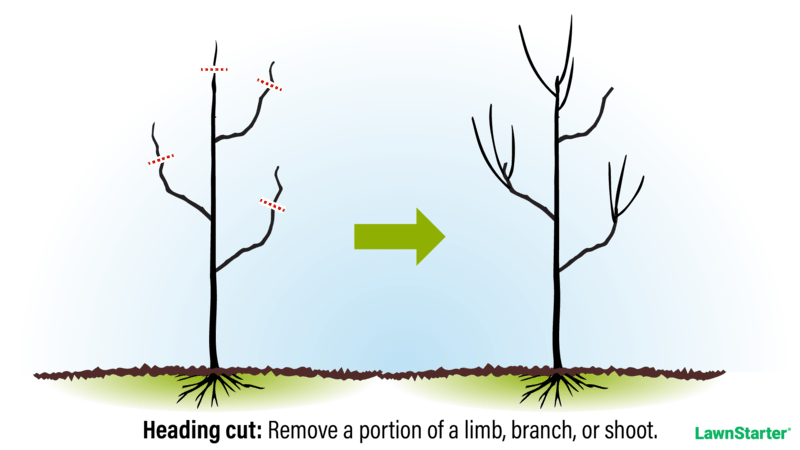
Pinching. This removes the actively growing tip of the branch. It promotes the growth of the buds lower on the stem and encourages branching.
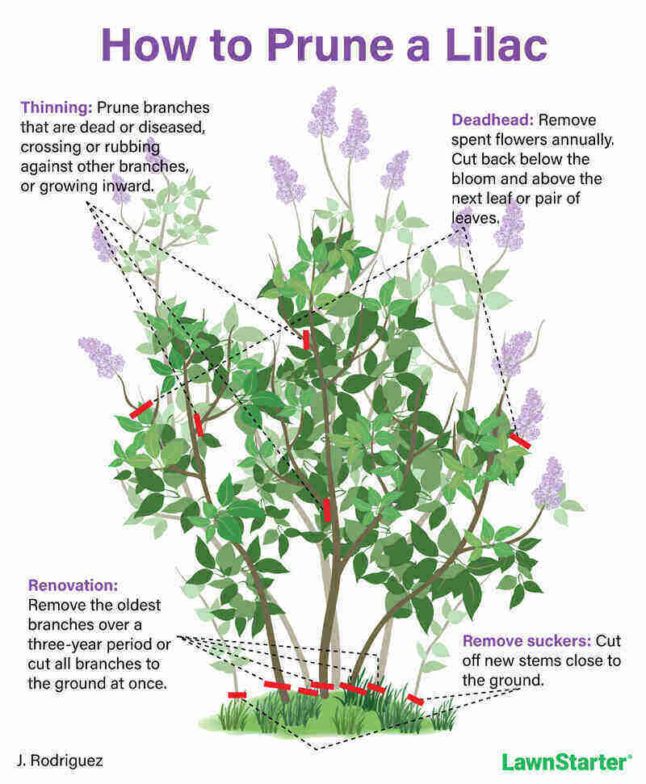
Proper Pruning Tools
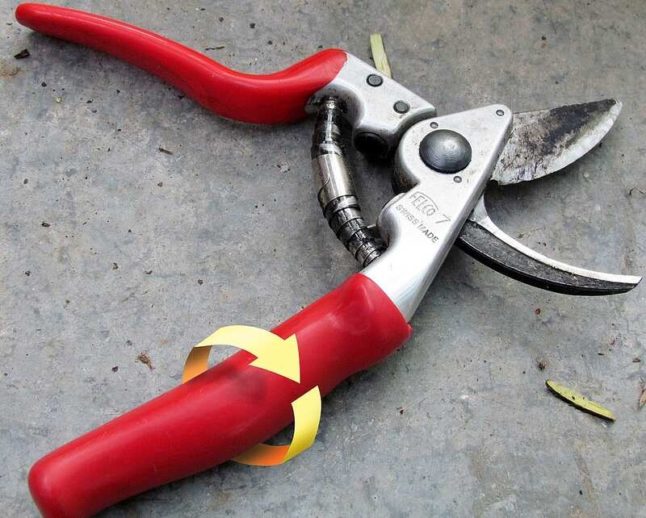
Using the proper tools will save you a good deal of frustration while pruning, and it will reduce the chances that you’ll damage the shrubs or yourself in the process. Pruning tools have special uses, such as:
Bypass pruning shears. These hand-held shears are best for stems less than ½ inch in diameter. They deliver a clean cut that keeps tissue intact so sprouting can occur.
Lopping shears. Lopping shears are best for branches up to 1½ inches in diameter. The lopper’s long handles provide leverage for cutting thicker stems.
Anvil pruners. Best for dead branches. This shear pairs one blade with a flat, anvil-like base that crushes the stems rather than providing a clean cut.
Pruning saw. For stems over 1-inch diameter, a pruning saw will do the trick. Many are curved to increase cutting power.
Sanitize Your Pruning Tools
While it’s always good practice to clean your garden tools, you should go one step further with pruning tools and sanitize them. If there’s a chance that you’ll be pruning diseased plants, sanitizing your tools will prevent the spread of disease to healthy plants.
Generally, your tools should be sanitized after you prune each plant. There are a variety of products available that do the job. Some common ones are:
- Ethanol or isopropyl alcohol. Better known as rubbing alcohol, this is an inexpensive and convenient disinfectant. Simply wipe (or dip) your pruning tools with a solution of 70% alcohol. The advantage is that you don’t have to wait for it to be effective.
- Chlorine bleach. To use, create a mix of one part bleach to nine parts water and soak the tools for 30 minutes. Effectiveness drops by half after a couple of hours, so you may need to make several batches for a big pruning job. Rinse afterward to prevent the tools from corroding.
- Household disinfectants. This includes the commercial sprays and liquids on the market, as well as disinfectant wipes. But be aware that there has not been much research on their effectiveness against plant diseases.
Common Pruning Mistakes
| Correct | Incorrect |
|---|---|
| ● Make a few large cuts instead of many small cuts. | ● Don’t “stub” a plant by just lopping it off at the top. That encourages multiple replacement branches to grow. |
| ● Prune just above a healthy bud, with the bud pointing in the direction you want the plant to grow. Cut at a 45-degree angle, with the low point of the cut opposite the bud. | ● Don’t cut too far from or too close to the bud you want to encourage. |
| ● Leave a “collar” when cutting off a branch. | ● Don’t cut branches flush against the trunk. |
| ● Open up a plant with thinning cuts. | ● Don’t cut more than one-third of the plant’s height in any one season. |
| ● Cut at the proper time of year — usually late winter or early spring, though there are exceptions. | ● Don’t be afraid to prune — your plant actually needs it to remove dead wood and take on the shape you want. |
FAQ
A spring-flowering shrub that blooms on “old wood” blooms from flower buds that formed on the previous year’s stems. Summer-flowering shrubs form their buds on “new wood,” stems grown in the same year that they flower. Everblooming shrubs produce flowers on old wood in the spring and summer flowers on new stems grown in the same year.
Applying sealer to a cut shrub or tree was once standard practice, but research has shown that it can be harmful. Woody plants take care of damage through a process called compartmentalization. Callus tissue gradually grows from the edge to the center of the wound, eventually covering it. Sealants can trap moisture that can lead to decay or fungal infection.
Pruning won’t keep a too-large plant under control. It’s best to choose the right-size shrub at the start. Some shrubs, like azaleas, are on the small side, growing 2 to 4 feet high. Spirea and oakleaf hydrangea are among the midsize shrubs; they can reach 4 to 8 feet in height. Some, like lily-of-the-valley shrubs, grow 9 to 13 feet high and are best for privacy landscaping.
When to Call in the Pros
Careful pruning is essential to ensure that your flowering shrubs perform at their best. But for some gardeners, the very idea of pruning strikes fear into their hearts.
If you are hesitant to take a pruning tool to your shrubs, consider calling a professional landscaping service. A local pro can give your shrubs a trim, and also advise about other care your plants might need during the year.
Main Image Credit: Kacharawa / Canva Pro / License
